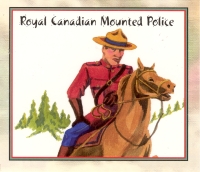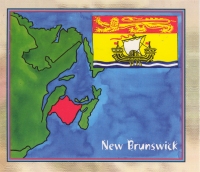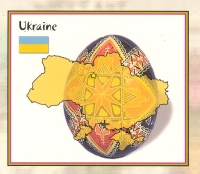| ________________
CM . . .
. Volume XII Number 20 . . . .June 9, 2006 
 |
Professor Noggin’s Geography of Canada: Card Game.
Victoria, BC: Outset Media (www.professornoggin.com), 2005.
30 cards & 1 three-numbered die, $14.99.
Subject Headings:
Educational games.
Card games.
Canada-Description and travel.
Physical geography-Canada.
Grades 4-7 / Ages 9-12.
Review by Gail Hamilton.
*** /4 |
| |
|
 |
Professor Noggin’s History of Canada: Card Game.
Victoria, BC: Outset Media (www.professornoggin.com), 2005.
30 cards & 1 three-numbered die, $14.99.
Subject Headings:
Educational games.
Card games.
Canada-History
Grades 4-7 / Ages 9-12.
Review by Gail Hamilton.
*** /4 |
| |
|
 |
Professor Noggin’s Countries of the World II: Card Game.
Victoria, BC: Outset Media (www.professornoggin.com), 2005.
30 cards & 1 three-numbered die, $14.99.
Subject Headings:
Educational games.
Card games.
Geography-Miscellaneous. Grades 4-7 / Ages 9-12.
Review by Gail Hamilton.
*** /4 |
| |
|

excerpt:
Q. Saskatchewan is one of two provinces that have no ocean coastline. What is the other province?
A. Alberta (From the “Easy” category of The Geography of Canada.)
Q. What is peculiar about Saskatchewan’s Little Manitou Lake?
A. Its water is salty. (From the “Hard” category of The Geography of Canada.)
Q. What international honour was awarded to Lester B. Pearson in 1957?
A. Nobel Peace Prize (From the “Noggin Buster” category of The History of Canada.)
 Informative, educational and fun, these card games, part of a set of 26, are designed for 2-8 players and are recommended (by the manufacturers) for children aged seven and up. Each boxed set is comprised of 30 illustrated question and answer cards, a die and an instruction sheet. The box is about the same size as a box of greeting cards, perfect both for classroom and home use or for taking along on a plane or car trip, and, of course, it takes up very little storage room. Simple instructions describe the play in which each person rolls the die, picks up a card from the central pile and asks a question of the next player. Each question corresponds to a number on the die. If the player answers the question correctly, he or she gets to keep the card. If not, the correct answer is given and the card is returned to the bottom of the central pile. Play continues until all of the cards in the central pile are gone. (There is also an opportunity to take another player’s card without having to answer a question. This can occur if a die roll corresponds to a “Noggin’s Choice” symbol on the card.) The person with the most cards wins. All players are well advised to listen to and remember the correct answers because the cards might come up again. Informative, educational and fun, these card games, part of a set of 26, are designed for 2-8 players and are recommended (by the manufacturers) for children aged seven and up. Each boxed set is comprised of 30 illustrated question and answer cards, a die and an instruction sheet. The box is about the same size as a box of greeting cards, perfect both for classroom and home use or for taking along on a plane or car trip, and, of course, it takes up very little storage room. Simple instructions describe the play in which each person rolls the die, picks up a card from the central pile and asks a question of the next player. Each question corresponds to a number on the die. If the player answers the question correctly, he or she gets to keep the card. If not, the correct answer is given and the card is returned to the bottom of the central pile. Play continues until all of the cards in the central pile are gone. (There is also an opportunity to take another player’s card without having to answer a question. This can occur if a die roll corresponds to a “Noggin’s Choice” symbol on the card.) The person with the most cards wins. All players are well advised to listen to and remember the correct answers because the cards might come up again.
 There are six questions on each card, three of which are in the “easy” category and three in the “hard” category. Players can decide which version of the game to play beforehand. Having two categories also allows for younger children to play the game with parents or older siblings or students - the younger kids can answer questions from the easy category, while the older players can answer the more difficult questions. “Noggin Busters” are the most challenging questions of all and appear occasionally. Questions range from the true/false variety to single word answers and short phrases and sentences. Answers are provided along the side of each card. What is particularly beneficial is that the answer to a true or false question is explained. For example, “Q. Halifax is Canada’s most eastern provincial capital. A. False. The most eastern capital is St. John’s.” There are six questions on each card, three of which are in the “easy” category and three in the “hard” category. Players can decide which version of the game to play beforehand. Having two categories also allows for younger children to play the game with parents or older siblings or students - the younger kids can answer questions from the easy category, while the older players can answer the more difficult questions. “Noggin Busters” are the most challenging questions of all and appear occasionally. Questions range from the true/false variety to single word answers and short phrases and sentences. Answers are provided along the side of each card. What is particularly beneficial is that the answer to a true or false question is explained. For example, “Q. Halifax is Canada’s most eastern provincial capital. A. False. The most eastern capital is St. John’s.”
Though the age appropriateness of the games is listed on the box as “7 and up”, it is doubtful that most seven-year-olds would be interested in the topics of the card sets reviewed, nor would they be able to read the cards. Older students would have to read the questions aloud for them. In addition, a few of the questions are rather poorly worded, and one spelling error was discovered.
 The illustrations on the cards are bright, colourful, and educational. Each illustration is different and offers another opportunity for learning. In the geography set, for example, cards pertaining to the provinces display a map showing the relationship of the province to the rest of Canada along with the provincial flag. The illustrations on the cards are bright, colourful, and educational. Each illustration is different and offers another opportunity for learning. In the geography set, for example, cards pertaining to the provinces display a map showing the relationship of the province to the rest of Canada along with the provincial flag.
The Geography of Canada set includes questions about capital cities, provinces, weather, landforms, bodies of water and natural resources. In The History of Canada, players will find questions about explorers, aboriginal people, the fur trade, early settlement, Confederation, wars, the building of Canada, famous politicians, sports figures, noteworthy Canadian women and Canadian inventions. Finally, Countries of the World II, perhaps the most difficult of the three games, covers major cities, languages, rivers, continents, natural resources, national sports and religion. In this set, the illustrations on the cards show the featured country’s flag as well as an outline map with a picture of a landscape scene, a native animal or an important symbol superimposed on it.
With their ease of play, variety of questions, and compact size, these games, both fun and educational, are certainly worthy of purchase. However, the price tag is a bit steep.
Recommended.
Gail Hamilton is a teacher-librarian in Winnipeg, MB.

To comment
on this title or this review, send mail to cm@umanitoba.ca.
Copyright © the Manitoba Library Association. Reproduction for personal
use is permitted only if this copyright notice is maintained. Any
other reproduction is prohibited without permission.
NEXT REVIEW |
TABLE OF CONTENTS FOR THIS ISSUE
- June 9, 2006.
AUTHORS |
TITLES |
MEDIA REVIEWS |
PROFILES |
BACK ISSUES |
SEARCH |
CMARCHIVE |
HOME |



 Informative, educational and fun, these card games, part of a set of 26, are designed for 2-8 players and are recommended (by the manufacturers) for children aged seven and up. Each boxed set is comprised of 30 illustrated question and answer cards, a die and an instruction sheet. The box is about the same size as a box of greeting cards, perfect both for classroom and home use or for taking along on a plane or car trip, and, of course, it takes up very little storage room. Simple instructions describe the play in which each person rolls the die, picks up a card from the central pile and asks a question of the next player. Each question corresponds to a number on the die. If the player answers the question correctly, he or she gets to keep the card. If not, the correct answer is given and the card is returned to the bottom of the central pile. Play continues until all of the cards in the central pile are gone. (There is also an opportunity to take another player’s card without having to answer a question. This can occur if a die roll corresponds to a “Noggin’s Choice” symbol on the card.) The person with the most cards wins. All players are well advised to listen to and remember the correct answers because the cards might come up again.
Informative, educational and fun, these card games, part of a set of 26, are designed for 2-8 players and are recommended (by the manufacturers) for children aged seven and up. Each boxed set is comprised of 30 illustrated question and answer cards, a die and an instruction sheet. The box is about the same size as a box of greeting cards, perfect both for classroom and home use or for taking along on a plane or car trip, and, of course, it takes up very little storage room. Simple instructions describe the play in which each person rolls the die, picks up a card from the central pile and asks a question of the next player. Each question corresponds to a number on the die. If the player answers the question correctly, he or she gets to keep the card. If not, the correct answer is given and the card is returned to the bottom of the central pile. Play continues until all of the cards in the central pile are gone. (There is also an opportunity to take another player’s card without having to answer a question. This can occur if a die roll corresponds to a “Noggin’s Choice” symbol on the card.) The person with the most cards wins. All players are well advised to listen to and remember the correct answers because the cards might come up again.
 There are six questions on each card, three of which are in the “easy” category and three in the “hard” category. Players can decide which version of the game to play beforehand. Having two categories also allows for younger children to play the game with parents or older siblings or students - the younger kids can answer questions from the easy category, while the older players can answer the more difficult questions. “Noggin Busters” are the most challenging questions of all and appear occasionally. Questions range from the true/false variety to single word answers and short phrases and sentences. Answers are provided along the side of each card. What is particularly beneficial is that the answer to a true or false question is explained. For example, “Q. Halifax is Canada’s most eastern provincial capital. A. False. The most eastern capital is St. John’s.”
There are six questions on each card, three of which are in the “easy” category and three in the “hard” category. Players can decide which version of the game to play beforehand. Having two categories also allows for younger children to play the game with parents or older siblings or students - the younger kids can answer questions from the easy category, while the older players can answer the more difficult questions. “Noggin Busters” are the most challenging questions of all and appear occasionally. Questions range from the true/false variety to single word answers and short phrases and sentences. Answers are provided along the side of each card. What is particularly beneficial is that the answer to a true or false question is explained. For example, “Q. Halifax is Canada’s most eastern provincial capital. A. False. The most eastern capital is St. John’s.”
 The illustrations on the cards are bright, colourful, and educational. Each illustration is different and offers another opportunity for learning. In the geography set, for example, cards pertaining to the provinces display a map showing the relationship of the province to the rest of Canada along with the provincial flag.
The illustrations on the cards are bright, colourful, and educational. Each illustration is different and offers another opportunity for learning. In the geography set, for example, cards pertaining to the provinces display a map showing the relationship of the province to the rest of Canada along with the provincial flag.